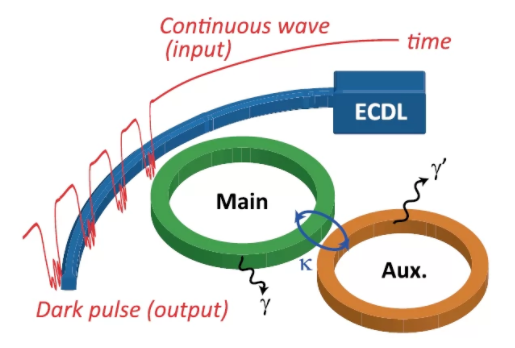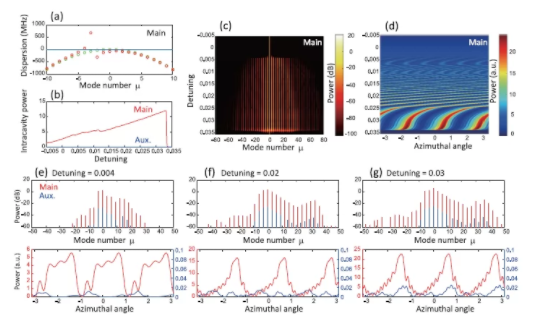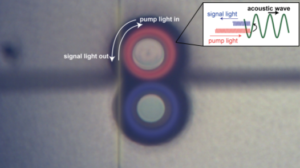Simulation of dark pulse generation by coupled resonators
Research
Simulation of dark pulse generation by coupled resonators
Proposal of a new computational model that can faithfully reproduce experimental results
Various nonlinear wavelength transformations can be achieved by using micro optical resonators, which are devices that confine light to a small area. Here is a simple example. When a laser light of a certain color (let's say green) is put into the resonator, the light that comes out can actually be a rainbow-colored light that includes all colors from blue to red. We call such a phenomenon and the emitted light "optical carcombs" in our research. (There are various conditions for what can actually be called an optical carcom, but I won't go into them here.) Optical Kercomb itself is a very interesting phenomenon, but it requires a great number of conditions for its occurrence. Of particular importance are the conditions related to the refractive index. It is said that the generation of optical Kercomb is impossible unless the conditions related to the refractive index are met.
In this study, we proposed a new numerical simulation model for optical CURCOM under conditions in which it is usually considered difficult to generate optical CURCOM. Based on a previous study that optical CURCOM can be generated by using a coupled resonator (a model combining two resonators), although it cannot be generated by a single resonator, we have established a model that more faithfully reproduces the experimental results. The model has also enabled the discovery of new phenomena that could not be confirmed by conventional computational methods, and is expected to lead to further research progress.

Figure 1: Schematic of dark pulse generation using coupled resonators

Figure 2: Simulation results of dark pulse generation
- Categories
- 研究トピックス



